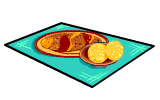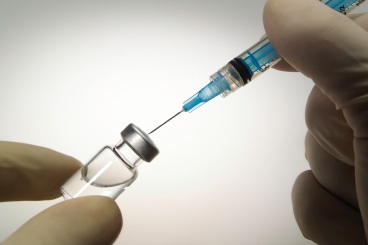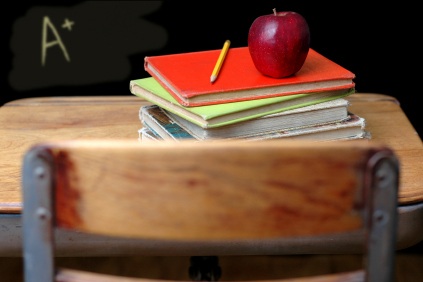Food, wonderful food, yes food may be the fuel that keeps the body’s engine going. But people don’t have it only in order to live. The smell, taste, texture and look of food all appeal to the senses first. Think about a visit to the movies without some munchies to serve as the perfect accompaniment. It’s not because you’re madly hungry that you purchase the bag of chips and the coke, is it? You do it because you can’t think of sitting inside the auditorium without some food to munch.
Ever wondered what goes into the making of your favourite food? Whether it’s the syrupy gulab jamun, the staple chapati or the succulent kabab, each of these ‘finished’ foods is an amalgamation of other foods, which in turn are made up of the chemical substances that we have written about in the article, ‘The Body’s Building Blocks’.
Let’s take a look at some of our most popular foods and the ingredients they are made of. Noted nutritionist K. T. Achaya in his book, Everyday Indian Processed Foods, has written about these foods.
The Staples
Let’s start with the staples, rice and wheat. The rice grains and flour that you get nicely packaged from the neighbourhood grocery, go through a series of processes before they are served on the table as boiled rice and chapatis.
Out of the bowels of the husk emerges the paddy grain which is milled and processed to become single grains of rice ready for cooking. Brown rice or the rice that still carries its coat of bran packs in a whole lot more nutrients than does polished white rice, in which only about a third of the vitamins and half the calcium are left after the polishing is done.
The practice of using extra water for boiling and then discarding the excess after cooking removes some more nutrients. But rice grains are not the only finished products from rice. Rice noodles (popular in the Far East), rice vermicelli, idlis(rice cakes) and dosai (rice pancakes) too, are made from the rice grain. Rice is the staple of the southern and eastern parts of India.
In nutritional terms, whole wheat flour is superior to rice, even brown rice. A unique protein called gluten enables the flour to transform into dough, with the help of a little water. In fact it is this property that determines the type of wheat to be used to make chapatis, biscuits, bread and cakes, as a certain type of wheat yields dough of a certain characteristic. Other forms of wheat include boiled porridge or dalia, vermicelli, spaghetti and macaroni from Italy and rava, which is broken and polished wheat.

Everyday Foods [Illustration by Shinod AP]
But what’s a plate of hot boiled rice or puffy chapatis without bowls of dal (lentils or grams) to accompany them? In India, in the south, dals are made into fragrant rasam, a thin soup, and sambar, a thicker one with vegetables in it. In the east, bitter gourd is sometimes added to them for piquancy, and in the west and north, ghee or clarified butter is added after the dals are cooked for enhancing their flavour.
Dals, being very high in protein, provide the average Indian, who is often vegetarian, with his or her main source of protein. Bengal gram (chick-pea or besan) and black gram (urad) are used for preparing various deep-fried snacks like crisp sev, murukku and pakodas.
The Cooking Medium
A lot of our cooking is done with the help of cooking oil, or else the foodstuffs are roasted, baked or steamed. While the last three are healthier alternatives to food being cooked in oil, a little bit of frying enhances the taste of a food immensely. In Western countries, cooking fat, at least in the past, was often got from animal meats. In India though, fats for cooking have mostly come from vegetable oilseeds. Seasame (til), mustard (sarson), groundnut and the flesh of the coconut have been used for a very long time, as oil. A saturated fat like butter is also used.
Many people make butter at home by diluting curd and churning it to give buttermilk and butter. Alternately, cream (malai) is skimmed-off daily from boiled and cooled milk, collected for a period and then churned to make butter. Ghee, another milk product, is derived from unsalted butter. Basically, butter is cooked till all the water content in it has evaporated. The clarified liquid left behind is ghee. Ghee is specially prized for its aroma, though it’s not known what causes it.
Fats, one of the three major classes of nutrients in food, the other two being carbohydrates and proteins, are the highest form of calories. So you should restrict the amount of fat in your diet.
Sugar, sugar
Besides the common crystal sugar, India has been traditionally making crude brown sugar called jaggery or gur, or khandsari, which is lumpy rock sugar. Both sugar and jaggery come from either sugarcane, toddy palm or date palm. Sugar is a carbohydrate and constitutes 99.5 per cent pure sucrose. It is blamed for causing cavities and obesity.
Non-veggies
6_2.gif
Whether eaten boiled or fried, or beaten up for use either as an omelette, or as a batter for meat chops, or in Chinese-style noodles and soups, and in ice creams and cake mixes, the egg is a perennial favourite. Eggs are storehouses of nutrients: besides fat, protein, vitamins and minerals. They are an excellent food for most children: the yolks can be introduced in a very soft, mashed form at about 4 or 5 months of age, and the quantity increased to one egg by the time the child is 7 to 8 months old.
Sea-fish such as the sardine, mackarel, shark, pomfret and sole and fresh-water fish like the rohu, catla, mrigal, hilsa and bhetki, are popular fish in India. Fish furnishes a high animal protein of 18-20 per cent. Fish-flesh has less than 2 per cent fat, so fish has great value in weight-reducing diets. Sea-fish is very high in iron.
In India, goat mutton accounts for about 40-45 per cent of the total meat consumed. The rest is divided between sheep mutton, beef and chicken meat. Practically all of the meat is freshly-killed and eaten, with little of it being frozen or canned.










